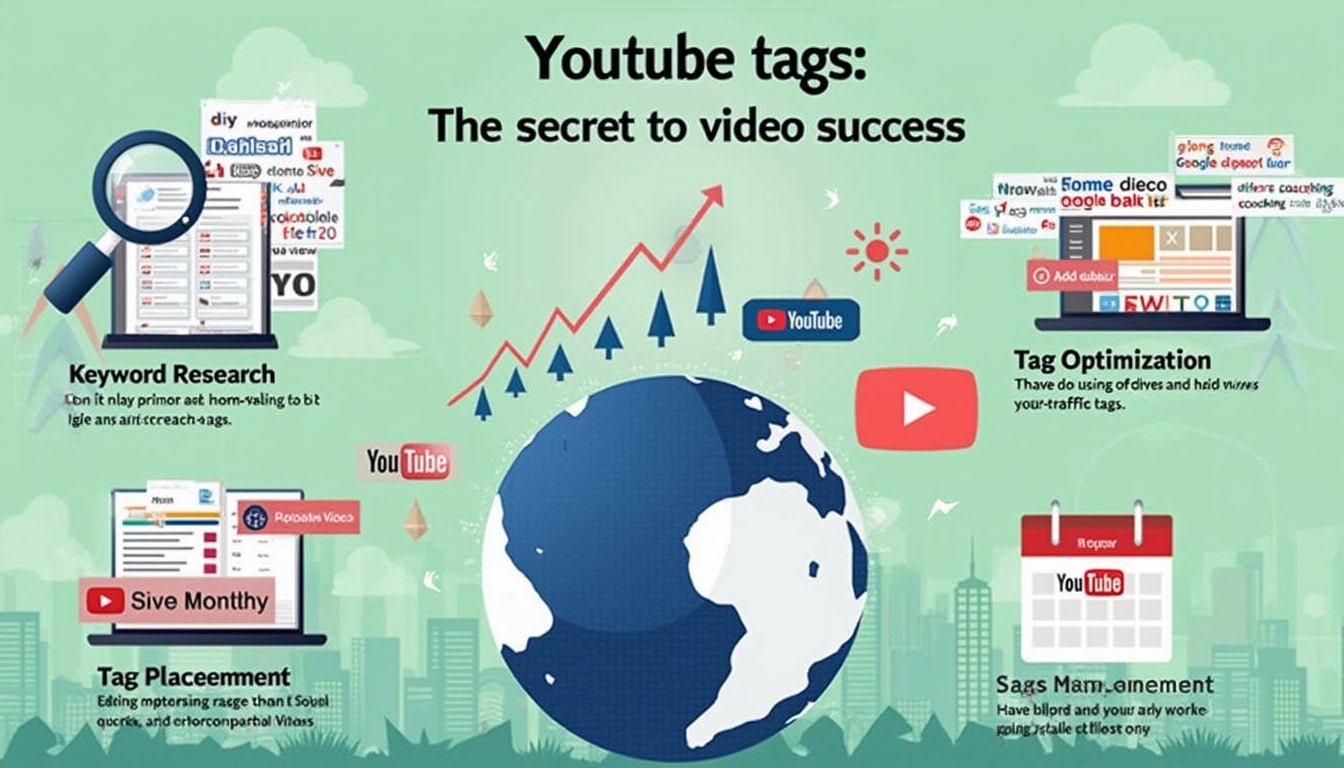In the ever-evolving landscape of YouTube, having a standout strategy is key. As aspiring creators navigate through an ocean of videos, an effective tag strategy can serve as the foundation for visibility and growth. With every minute, over 500 hours of video are uploaded, making it more crucial than ever to optimize your content for discoverability. Finding innovative ways to enhance video performance, reach a wider audience, and boost viewership is no small feat. Tags play a significant role in this process, acting as the vital link connecting your content with viewers seeking precisely what you offer. Mastering the art of tagging can elevate your content and ultimately propel your success on this monumental platform.
The Role of YouTube Tags in Video Success
YouTube tags are descriptive keywords that assist in categorizing videos and making them more discoverable to users. By providing essential context to the platform’s algorithm, effective tagging can dramatically influence visibility on the site. Important aspects of YouTube tags include:
Search Optimization
Tags play a pivotal role in determining how well your video performs in search results. If correctly chosen, they help users find content related to their interests.
Suggested Videos
Including relevant tags can increase the likelihood of your video appearing in the “Up Next” section, enhancing viewers’ chances of discovering your content.
Audience Targeting
Tags help YouTube’s system deliver videos to the right audience based on their interests and viewing habits. This increases the potential for longer watch times and viewer retention.

Best Practices for Choosing YouTube Tags
To create an effective tagging strategy, consider these best practices. Implementing these strategies can significantly enhance your video’s visibility and performance.
Maintain Relevance
Always use tags that directly relate to your video content. This will keep your audience engaged and improve the video’s performance in search results. For instance, in a video about “baking chocolate chip cookies,” tags like “cookie recipe” or “how to bake cookies” would be appropriate.
Mix Broad and Specific Tags
Utilizing a combination of broad and niche-specific tags can optimize audience reach while keeping a focus on relevant topics. Broader tags drive larger traffic but may face more competition, whereas specific tags focus on niche audiences.
Analyze Competitors
Staying aware of what works for competitors can inform your own tag choices. Tools like TubeBuddy can help you see which tags are beneficial for top-performing videos in your niche.

Leveraging Long-Tail Keywords
Long-tail keywords, which are more descriptive phrases related to your content, play a crucial role in your tagging strategy. These less common phrases may feature lower competition, giving your videos a greater chance at ranking highly. Consider using phrases like “easy cookie recipes for beginners” or “best oven temperature for baking cookies” to further enhance searchability.
Creating Descriptive Tags
While many creators stick to single keywords, expanding to larger, descriptive phrases can lead to better results. Tags such as “step-by-step cookie baking tutorial” or “gluten-free cookie recipes” accurately reflect the video’s content while attracting interested viewers.
Staying Updated with Trends
Incorporating trending topics or tags can also increase a video’s visibility. Regularly monitoring trends in your niche and swapping tags can help you stay relevant and optimize performance.

Crafting Custom Tags
Creating unique tags tailored to your specific content can significantly help you rise above the competition. Brainstorm ways to capture what makes your content distinctive.
Reflecting Unique Selling Points
Identify standout aspects of your videos and tag accordingly. If your content features something exclusive—like a unique ingredient in a baking recipe—a custom tag could be formulated such as “secret ingredient cookie recipe”.
Branding with Tags
Incorporating your channel name or branding elements within your tags can boost recognition. For instance, using tags like “James’ baking tips” solidifies your presence and draws viewers looking specifically for your content.

Measuring and Adjusting Tag Performance
Successful content creators know that data-driven approaches enhance effectiveness. Regularly analyzing the performance of your tags can inform necessary strategic shifts.
Utilizing Analytics Tools
YouTube provides various analytic tools that can help track the performance of your tags and overall SEO. Utilizing insights derived from these analytics allows you to better adapt your strategies and optimize future uploads.
Updating Tags as Needed
If your videos don’t perform as expected, consider revising your tags. Keeping them current with audience demand can significantly enhance engagement.

Conclusion on Effective Tag Strategies
Understanding the essential components of an effective YouTube tag strategy undoubtedly influences the potential success of your channel. By focusing on relevant, unique, and trending tags, creators can better connect with their intended audience. Tags remain a powerful tool to enhance discoverability, reach wider audiences, and spark engagement. Consistently revisiting and adapting tagging methods will help ensure ongoing relevance, ultimately supporting sustained growth and success on YouTube.
